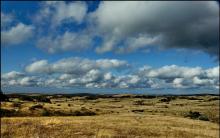Technological progress is advancing by leaps and bounds, new technologies are appearing that radically change the life of mankind. The payback for these achievements is simple: the dirtiest city in the world - such a not at all prestigious title is now ready to be shared by many settlements on our planet.
And if five to ten years ago the most polluted cities in the world were simply large megacities, with a large population, air pollution from exhaust gases and heavy industry, now the situation has turned in a completely different direction. Modern processes of mineral extraction, various types of production, and in some places simply the livelihoods of the population, cause truly terrible natural and environmental problems.
Quick navigation through the article
How does this happen
How do the world's most polluted cities emerge? With the ever-increasing standard of living, we are getting used to the fact that modern technology is able to provide for the slightest wishes in terms of ensuring comfort in everyday life. Such benefits of civilization seem natural and normal, because technical industries are developing, providing modern technologies in literally everything. Have you ever wondered how this actually happens?
Intensified development of mines and deposits inevitably leads to pollution of the surrounding air and groundwater. Since large-scale production constantly requires a large amount of natural resources, treatment facilities cannot cope with their functions or are simply designed for a much smaller volume. The most dangerous situation is created in low-income countries, where no funds are allocated to maintain the environment.
The TOP of the dirtiest cities in the world is constantly updated with new objects. Added to the dangerous factors are total soil contamination, radioactive contamination, and high air pollution. Life in the most environmentally polluted cities in the world is truly dangerous and leads to widespread genetic and physical diseases, mutations, and short life expectancy.
How is pollution assessed?
By what parameters are the most polluted cities in the world assessed? Many companies are assessing the most environmentally unfavorable areas for life. In particular, these are the World Health Organization (WHO), UNESCO and many others, including analytical ones. When determining the dirtiest cities in the world, several factors are taken into account:
- Content in the environment of substances that negatively affect human health. The soil, water and air in these areas are being carefully examined.
- Radioactive contamination.
- Proximity of the region to the source of pollution.
- Number of living population, birth rate.
- The influence of emissions on the development of a child's body.
The research was carried out on a certain scale, after studying the ecology, ratings were given for each of the parameters, and a list of the dirtiest cities in the world was compiled.
Rating of the most polluted cities
Which cities in the world are dangerous to live in? The number of regions unfavorable for living is growing steadily every year. If we compare the list of the most polluted cities in the world for 2016 with the most polluted cities in the world in 2017, the increase in polluted cities was about 10%. At this rate, clean cities will soon become a real asset on the planet.
According to WHO and the agency Curiosityaroused.com, the TOP 10 dirtiest cities in the world were announced. Of course, in fact there are many more of these regions; in some individual countries it is possible to create a similar list of ten or more objects. It should be borne in mind that this list reflects the most terrible problems of humanity in terms of ecology and danger to life.
LinFun (China)
Smog over Linfyn city:
This Chinese city is the cradle of coal mining for the entire country. The bulk of coal industry enterprises are located here, both state-owned, ensuring compliance with environmental standards, and private, working in their own interests, often half illegally.
Coal mining is carried out on a large scale, so the air around the city is oversaturated with coal dust, carbon and lead. All these elements also settle on buildings, cars, and people. The result of living in this dirty city in every sense of the word is diseases of the respiratory system of varying severity from complicated pneumonia to lung cancer.
Tianying (China)
The city is constantly shrouded in blue smoke, and at a distance of ten meters, even during the day, it is difficult to see anything:

This is the metallurgical heart of China. But in addition to industrial giants emitting metal oxides, dust and gas into the environment, lead mining also takes place here. The oxides of this heavy metal affect the air, water and soil not only in the city itself, but also within a radius of ten kilometers around it. Vegetables and grains grown here contain more than twenty times the lead content. This situation leads to the development of pathologically irreversible processes in the human brain, which is where the highest birth rate of children with symptoms of dementia is.
Sukinda (India)
In 84.75% of cases of illness among local residents, the increased content of chromium in the body is to blame:

This Indian town, back in 2016, was firmly included in the ranking of the dirtiest cities in the world thanks to its chromium mines. Since treatment facilities in this region are still only at the development stage, local waters and air contain concentrations of chromium that are lethal to humans. This chemical element is a strong carcinogen and causes gene mutations and various oncological health problems.
Dzerzhinsk (Russia)
Since the beginning of the last century, toxic waste has been dumped in the vicinity of the city, many of which are extremely dangerous to humans:

Some researchers believe that this city in the Nizhny Novgorod region should top the top 10 dirtiest cities in the world. However, for now it is the dirtiest city in Russia. The situation here is almost critical: for many years, from 1938 to 1998, hazardous waste from various industries accumulated here. As a result, their number reached 300 thousand tons.
Considering the number of residents of this city, each person accounts for about one ton of the contents of deadly burial grounds. The level of harmful chemicals such as phenols and dioxides exceeds the maximum permissible standards by seventeen million times! Naturally, having such characteristics for life, Dzerzhinsk is an endangered region - the mortality rate here exceeds the birth rate by 26 times. The industry in this polluted place continues to operate only thanks to migrant workers who are forced to stay in the region due to high wages.
Norilsk (Russia)
Every year, about four million tons of cadmium, copper, lead, nickel, arsenic, selenium and zinc are released into the Norilsk air:

Consistently ends up in the dirtiest cities in the world. Built about ten years ago, the treatment systems have improved the overall picture in some ways. However, according to the results of a survey of the region in 2017, Norilsk still leads as the most polluted city in Russia and is among the 10 most polluted cities on our planet.
The problems of this city are the huge emissions from the largest metallurgical plant on the planet. Lethal doses of dangerous elements such as lead, cadmium, arsenic, zinc, copper and others are present in the atmosphere, groundwater and soil of this area. Norilsk has long been notorious as an area of environmental problems - there is almost no vegetation, insects cannot survive, and black snow falls in winter.
Chernobyl (Ukraine)
Today, about 500 people live in the zone. Most of them are old people. Work is underway in the exclusion zone, but for safety reasons the government allows you to stay in the exclusion zone for a maximum of 14 days:

The city is world famous for the explosion at a nuclear power plant in April 1986. Radioactive elements quickly spread through gusts of wind to nearby territories within more than one hundred and fifty thousand square kilometers. Residents of the city were hastily evacuated, and people are still not allowed to live here.
Research by international organizations, including, according to WHO, plutonium, uranium, iodine, strontium and heavy metals are present in the affected area in concentrations unacceptable for human existence. Chernobyl, as a zone of extensive nuclear disaster, has been one of the most polluted cities in the world since 1986.
Dhaka (Bangladesh)
Bangladeshis themselves do not care about the environment: garbage is scattered everywhere, and industrial and medical waste is simply dumped into rivers:

The capital of Bangladesh is notorious for its environmental conditions. Total water pollution with pesticides and pathogenic bacteria makes life in this city deadly. Another important factor is the lack of waste processing plants. There is no fight against the problems of storing garbage waste, so mountains of garbage can be seen right on the roads and in residential areas of the city.
In fact, Dhaka is the dirtiest city in the world if pollution is measured in a literal sense. Considering the warm climate of the country, pollution by waste and the proliferation of microorganisms leads to increased air pollution, unsuitability of drinking water for food, infectious diseases and high mortality among the population.
Kabwe (Zambia)
Within a radius of ten kilometers from Kabwe, it is deadly to drink water and even breathe air:

In this African region, large deposits of lead were discovered about a hundred years ago. Since then, active mining has been underway; the mines are constantly poisoning the environment, including the air, groundwater and soil. Damage to the body by heavy metal is fraught with blood poisoning, muscle atrophy and irreversible changes in the functioning of internal organs.
La Oroya (Peru)
The surroundings of the city are more reminiscent of a lunar landscape with bare, scorched earth, without grass, trees and bushes:

The small town has been regularly exposed to toxin emissions from working mines since 1922. The level of lead in the blood of local residents is many times higher than even the maximum permissible level. The vegetation in this region is regularly destroyed by acid rain, and the majority of local residents have pathologies incompatible with life.
Karabash (Russia)
There is almost no vegetation, scorched earth, mountains of waste, cracked orange soil, acid rain. Products from the processing of lead, arsenic, sulfur and copper are in the air

Which city tops the world's most polluted cities? Today, according to the world organization UNESCO, the dirtiest city in the world is Karabash, located in the Chelyabinsk region of our vast Motherland.
Pollution of this region began in 1822, when gold ore reserves were discovered here. In the twentieth century, the mining and smelting of copper was added to the development of gold veins, which made the city of Karabash a real zone of environmental disaster. The fact is that in those days, when developing deposits, they did not particularly care about the environmental aspect of the process and there were no treatment facilities as such. During its continuous operation, the copper alloy production plant, simply put, burned out all living things in vast areas around it. Thanks to the work of this industrial giant, acid rain, dense atmospheric pollution and an almost complete absence of vegetation have become frequent guests in this area.
Needless to say, the population in this region (this includes Karabash itself and nearby Chelyabinsk) is gradually dying out due to various deadly pathologies caused by the environment. Cancerous tumors, genetic abnormalities, mutations, dementia and cerebral palsy are the most common causes of high mortality among residents of this region.
This is a real problem
The problem of total environmental pollution is becoming more acute every year. The number of the world's dirtiest cities is steadily growing. Every year, the TOP ten dirty cities include not only underdeveloped cities from countries below the poverty line, but large, industrial regions. Soil migration, air currents and cyclones spread harmful soil, air and groundwater over many kilometers, thereby creating a global environmental problem for all inhabitants of planet Earth.











The most beautiful motorcycles in the world
Which sea is the cleanest in the world?
Top 10 Most Expensive Furs
The largest and most luxurious casinos in the world
Knightly orders of Europe XI - XIII centuries